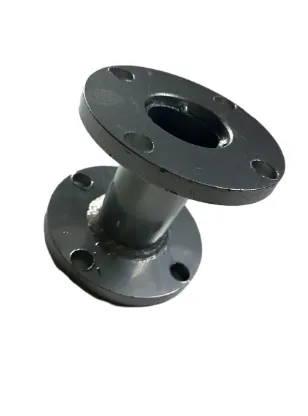loading...
- No. 9, Xingyuan South Street, Dongwaihuan Road, Zaoqiang County, Hengshui, Hebei, China
- admin@zjcomposites.com
- +86 15097380338
- Welcome to visit our website!
Innovative Applications of Fiber Reinforced Polymer Bars in Construction and Engineering
Fiber Reinforced Polymer Bars A Modern Solution for Construction
Fiber Reinforced Polymer (FRP) bars represent a transformative technology in the realm of construction materials, particularly in enhancing the durability and strength of various structures. As the construction industry continually seeks solutions that combine lightweight properties with robustness, FRP bars have emerged as an innovative alternative to traditional steel reinforcement.
What are Fiber Reinforced Polymer Bars?
FRP bars are composite materials made of a polymer matrix reinforced with fibers, which can be glass, carbon, or aramid. These bars leverage the strength of the fibers and the versatility of plastics. The result is a lightweight, corrosion-resistant product that exhibits excellent mechanical properties. Typically, FRP bars are used in concrete structures, where they replace conventional steel rebar.
Benefits of Using FRP Bars
1. Corrosion Resistance One of the most significant advantages of FRP bars is their resistance to corrosion. Unlike steel, which can corrode when exposed to moisture and chemicals, FRP bars maintain their integrity over time. This quality is particularly beneficial in environments, such as coastal regions or areas where de-icing salts are used, where steel reinforcement would quickly fail.
2. Lightweight FRP bars are considerably lighter than steel, making them easier to transport, handle, and install. This property can reduce labor costs and simplify the construction process since workers can manage materials more efficiently.
3. High Strength-to-Weight Ratio FRP bars exhibit a high strength-to-weight ratio, allowing structures to bear loads effectively without adding unnecessary weight. This characteristic is particularly advantageous in designing precast concrete elements and thin-walled structures, where minimizing weight is critical.
4. Non-Magnetic and Non-Conductive Unlike steel, FRP bars are non-magnetic and non-conductive, making them ideal for structures that require electromagnetic neutrality, such as certain high-tech facilities or structures built to withstand electromagnetic interference.
5. Design Flexibility The versatility of the polymer matrix allows for a wide range of design possibilities. FRP bars can be tailored to meet specific structural requirements, including varying sizes, shapes, and fiber orientations, which can optimize performance based on the intended application.
fiber reinforced polymer bars

Applications of FRP Bars
The application of FRP bars spans various sectors within the construction industry. They are particularly effective in
- Bridge Construction The lightweight nature and corrosion resistance make FRP bars suitable for use in bridges, where they can significantly enhance service life and reduce maintenance costs.
- Parking Structures With exposure to chemicals used for snow and ice management, FRP bars are ideal for parking garages, as they mitigate the risks of corrosion and deterioration over time.
- Water Treatment Facilities The ability to resist aggressive chemicals found in water treatment makes FRP bars a preferred choice in such environments, contributing to more durable infrastructure.
- Marine Structures In maritime applications where seawater corrosion is a concern, FRP bars can provide longevity and reliability.
Challenges and Considerations
Despite their numerous advantages, the adoption of FRP bars is not without challenges. The initial cost of FRP materials can be higher than that of traditional reinforcements, which might deter some construction managers. Furthermore, knowledge and expertise in the use of FRP are still emerging within the industry, necessitating ongoing education and training.
Conclusion
Fiber Reinforced Polymer bars symbolize a significant advancement in construction technology. By combining lightweight properties with exceptional strength and corrosion resistance, they offer a compelling alternative to traditional materials. As more engineers and architects recognize their potential, FRP bars are likely to become a standard feature in modern construction projects, paving the way for more resilient and sustainable infrastructure. The future of construction lies in innovations like FRP, where durability meets efficiency, reshaping the landscape of our built environment.
-
GRP Structures: The Future of Lightweight, High-Performance EngineeringNewsJun.20,2025
-
FRP Water Tank: High-Performance Storage for Corrosive and Clean Water SystemsNewsJun.20,2025
-
FRP Square Tube: The New Industry Standard for Chemical and Structural ApplicationsNewsJun.20,2025
-
FRP Pultruded Profiles: The Ultimate Choice for Lightweight Structural StrengthNewsJun.20,2025
-
FRP Handrails: The Safer, Smarter, and Stronger Choice for Modern InfrastructureNewsJun.20,2025
-
FRP Grating: The Smart Solution for Durable, Lightweight Industrial FlooringNewsJun.20,2025
-
Why Choose a Galvanized Water Tank for Your Storage NeedsNewsMay.21,2025
